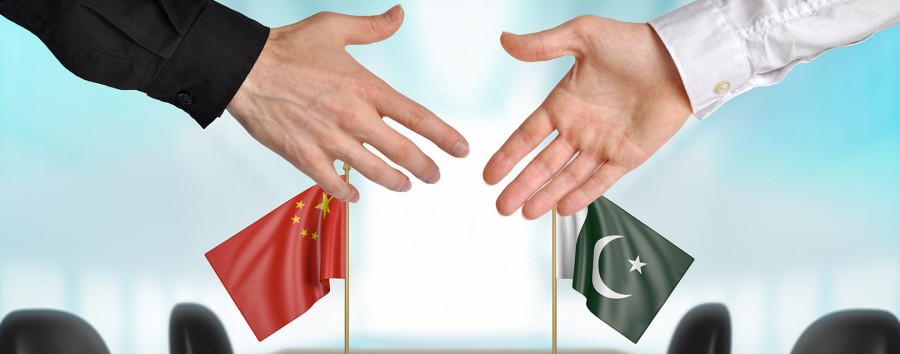By Irfan Shahzad
This month, i.e. July, marks the 6th anniversary of signing of Memorandum of Understanding (MoU) between China and Pakistan for the Long-term Plan of the China-Pakistan Economic Corridor (CPEC). The MoU was signed on 5 July 2013 in Beijing. During these past six years, CPEC has emerged as the flagship project and so far the most successful component of China’s mega Belt and Road Initiative (BRI). On a larger global and regional scene, BRI has doubtlessly emerged as one of the greatest-ever plans of trans-national connectivity and development. That is well-established, globally, now. It needs little mention that excellent communications infrastructure, the much-needed hardware of trans-national connectivity; and large-scale energy generation projects, the key to smooth running of any economic activity – have been ensured in a number of countries as part of BRI. The largest of such initiatives – both in case of communications infrastructure and energy generation – are being witnessed as part of CPEC. So far Pakistan and China have successfully launched 22 projects on the ground, costing more than US$ 28.5 billion. Overall portfolio of the CPEC is said to be around $ 62 billion, by 2030, while additional projects to be added later will add to the overall total investment that the Corridor will generate. However, as is universally known, every set of hardware needs matching software for it to be of any meaningful use. This makes us to state that for BRI, at this point of time, the need of the hour is to move towards matching software. This holds equally true for CPEC. So what this software should contain? The first and foremost is image building. Negative portrayal by anti-BRI forces is too strong as compared to positive projection of its benefits by China and recipient countries, for their own respective people. Ironically, untrue propaganda about the so-called ‘debt trap’ and ‘dumping’, even in the name of ‘new colonialisms’ is increasing despite a number of clarifications from Beijing as well as capitals of other partners countries. The need is to bring forth the truth, forcefully. Enhanced, and specifically targeted, media collaboration between China and partner nations needs to be stepped up. In case of CPEC, in particular, while the negative propaganda such as the ‘new East India Company’ has met the reality of potent Pakistan-China on-the-ground cooperation, certain misconceptions about the flow of goods as well as services need to be tackled with jointly devised strategies. Connectivity is primarily for the purpose of cross-border trade and movement of the people. This is supplemented by free and preferential trade arrangements for desired results. China and the partner countries need to ensure win-win bilateral and regional trade arrangements; where no country feels flooded with one way traffic of goods and services. On a larger global and regional scene, the BRI has undoubtedly emerged as one of the greatest-ever plans of trans-national connectivity and development. That is well-established, globally, now it is good to note that Pakistan and China have now started implementation of FTA 2 (Free Trade Area Agreement, Second Phase) which would facilitate enhanced bilateral trade and to some extent would address the negative trade balance – presently hugely in favour of China. Yet, if an initiative of the size and scope of CPEC is to be seen as a successful venture; it would require an across-the-board feeling of win-win trade cooperation on both the sides. Connectivity also is the name of smooth movement of people: for this, immigration and customs laws, regulations and procedures have to be harnessed in ways that BRI- and particularly CPEC-built infrastructure becomes rewarding for all the partners. Wherever there is increased business, inter-business frictions are bound to grow. A full-fledged Business Disputes Settlement Mechanism – the journey towards which has already been started – would be pivotal for the long-term success of BRI and CPEC. With increased people-to-people exchanges, it becomes vital to sensitize businessmen, workers and other visitors about religious, cultural and social norms of China and its partner countries. This is significant for the mutual goodwill to continue, and for much needs acceptance of each other in the long-run. And last but not the least: it is the time for meaningful partnerships for socio-economic development and poverty reduction so that every person in the partner nations sees the fruits of BRI as a mega global initiative coming directly towards him/her. CPEC, in this case too, is emerging as an example for the rest of BRI partnerships as Pakistan and China embark upon a $ 1 billion (grant from China to Pakistan) initiative for 27 projects of socio-economic uplift. It is good to note that leadership in China and partner countries realize the need for this rather lesser focused ‘software’ in addition to the great infrastructure that BRI has built and is building. There was notable progress towards this ‘software’ in the recently held 2nd Belt and Road Forum of international leaders held in China at the end of April 2019. This needs to be taken forward and with greater vigour.










